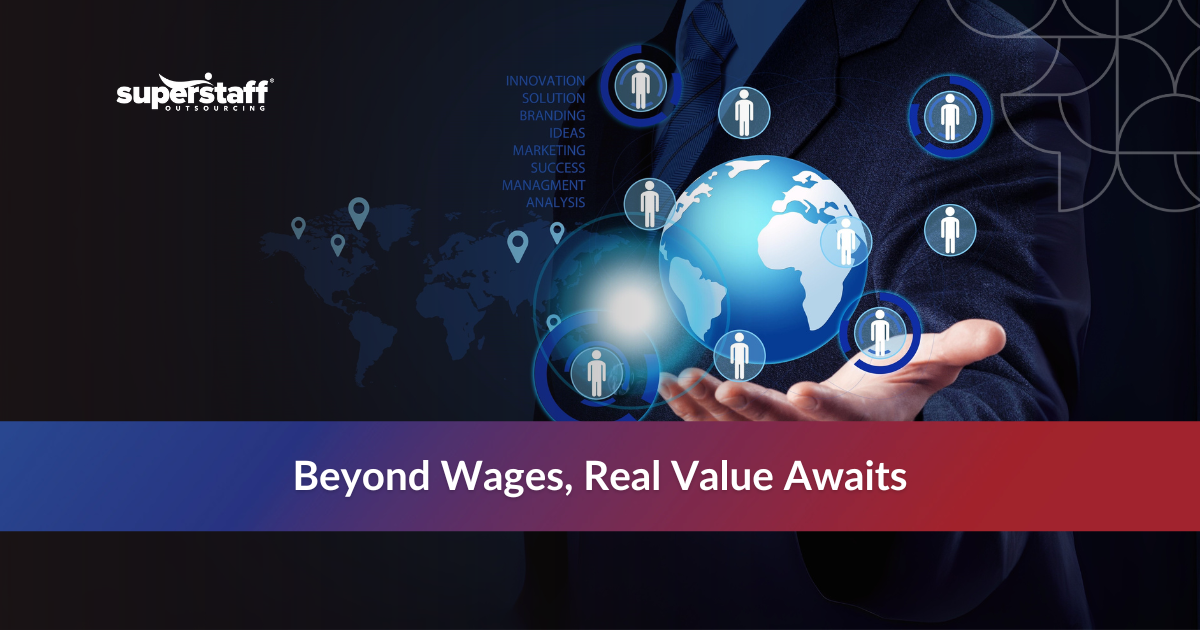
Employee turnover is killing businesses in more ways than one. While many wish this sentence is nothing but a sheer exaggeration, historically high data dominating headlines tell otherwise. From record-breaking wage increases to burned-out executives, let’s analyze the true cost of “The Great Resignation” in this article.
Why Did ‘The Great Resignation’ Happen?
When Texas A&M University Professor Antony Klotz first forecasted the trend in May 2021, he pointed out four primary reasons why “The Great Resignation” happened during the pandemic:
- A high number of resignees were from the backlog of employees who wanted to quit pre-pandemic
- Frontline workers in specific sectors experienced burnout
- The pandemic has led many to re-think how they see work
- Employees wanted to continue working remotely
But Klotz and many business leaders didn’t predict “The Great Resignation” to continue gaining momentum and birthing new disruptions. Like the pandemic, many thought “The Big Quit” would be over quickly. The reality is far more different.
As of December 2021, the labor market still has 10.9 million unfilled job openings. Many businesses still scramble to figure out and adapt to what truly drives employees to stay—costing them significant monetary and nonmonetary losses.
Read More: How Do You Navigate ‘The Great Resignation’?
The Cost of ‘The Great Resignation’: How Employee Turnover Is Killing Businesses
Monetary Costs of ‘The Great Resignation’
A staggering 75% of business leaders agree that “The Great Resignation” has poked large holes in their financial reservoirs. Let’s take a deeper look at how employee turnover is killing businesses financially.

Talent Acquisition and Attrition
Losing a single employee is and will always be costly, but imagine losing them in droves—and without the guarantee of replacing them soon. Since the pandemic, 84% of jobs remain open longer than usual. How much is this trend costing businesses?
The Predictive Index’s 2022 State of Talent Optimization Report revealed that the average cost of resignation per employee is $11,372. Multiply this amount to a hundred, and you’ll have almost $1 million of unmaximized hiring, onboarding, and training investments. But the impact doesn’t stop there.
Since their workload has increased following the departure of their former colleagues, 63% of Gen-Z and millennial employees who did not join “The Great Resignation” have wondered if their pay was high enough. This thought pushed employers to set a new baseline for attracting and keeping talents. About 58% of businesses have offered “higher-than-usual” starting salaries and yearly increases.
Read More: 6 Employee Retention Tactics That Can Boost Your Recruitment
Wage Hike
Although “The Great Resignation” isn’t merely a pay issue, it has undoubtedly fueled wage increases. The stiff competition for attracting and retaining talents has pushed U.S. companies to outdo each other in offering sweeter deals—even for those who did not switch jobs.
According to ADP Research Institute’s Workforce Vitality Report, jobholders’ wage growth reached an all-time high of 5.9% in December 2021. Still, the biggest winners of the current labor climate are job switchers, with a 7.5% average wage growth increase. The latest report from the U.S. Bureau of Labor Statistics, on the other hand, shows that as of the fourth quarter of 2021, a full-time worker’s mean wage is $53,490 yearly or $1,028 weekly.
Nela Richardson, ADP’s Chief Economist, has made a poignant observation of the economic impact of the head-to-head talent competition. In a Time article, she explained that inflation results from supply chain bottlenecks—a byproduct of a tight labor market—rather than wage-push inflation. She added:
“It’s not about the worker, it’s about the other company. We can see that’s very resonant, especially given that larger companies have the ability to increase wages faster to offer special bonuses and more flexibility than smaller companies.”
Office Relocation
As inflation’s ripple reaches the real estate market, many employees have moved to areas where their wages will get more mileage, prompting many companies to initiate a change in business addresses. One survey showed that about 44% of business leaders who have shown little interest in relocating pre-pandemic have now become more open to exploring new locations.
While corporate relocation may help businesses enlarge talent pipelines, it is also a costly and time-consuming endeavor. Moving 10,000 square feet of office space could range from $5,000 to as high as $30,000, depending on the number of employees and office furniture. Factor in other costs, such as marketing and productivity loss, and you’ll pay a much hefty price.
Nonmonetary Costs of ‘The Great Resignation’
Aside from leaving huge dents on many businesses’ balance sheets, “The Great Resignation” is costing employers intangible losses that may be even harder to recover. Let’s take a look at some of the nonmonetary costs of “The Great Resignation.”

Low Morale Among Upper Management
Top executives are not immune to 2021’s most significant blows to businesses. With droves of employees leaving their seats empty, C-level executives feel more pressured than ever. They, too, are joining “The Great Resignation.” And since executive roles are, by nature, harder to fill, businesses are taking triple hits.
Resignations among CEOs increased by 16% in the last quarter of 2021. In October, a job site reported C-suite level job openings to rise to 40,681. The trend applies even to long-tenured chief executives of large multinationals. CEOs of Twitter, Disney, Amazon, and American Airlines have earlier announced that they are vacating their seats this year.
What’s driving corporate America’s bosses to quit? It’s a culmination of everything that transpired since the pandemic took the world by surprise. C-suite executives had to navigate and pull their organizations through disruptive changes from day one. All these took a toll on the stress and burnout level even of employees used to a high-pressure environment.
Read More: 6 Key Trends and Statistics to Drive Your Recruitment Strategies
Negative Branding That May Be Hard to Redeem
In the current state of the labor market, employer branding is companies’ most powerful arsenal. Forbes calls it the most significant trend in talent acquisition. Unfortunately, employer branding is also the first and most affected by a high attrition rate.
A high employee turnover rate reflects low employee engagement and morale. And when employees are dissatisfied, they are highly likely to resign—creating a negative cycle with the organization. According to Gallup, companies with lower engagement experience more than 40% voluntary employee churn every year.
Such a work environment will put the company in a more difficult position to attract and retain talents. Why? Because employees share experiences on numerous platforms.
Negative Word-of-Mouth
A high resignation rate gives a company a bad-place-to-work impression, which could quickly spread like wildfire among job seekers. Job listing websites, such as Glassdoor, Indeed, and LinkedIn, have given employees more than an avenue to network professionally.
Through rating and review capabilities, these easily accessible platforms have equipped employees with the power to make or break a company’s reputation as an employer. Take a look at these numbers:
- 86% of employees research company reviews and ratings to decide where to apply for a job.
- 50% of candidates say they wouldn’t work for a company with a negative reputation, even if offered a pay increase.
- 4 out of 5 job seekers read online reviews before applying to a company.
Long-Term Talent Acquisition Problems
“The Great Resignation” will leave an indelible imprint on the employees’ minds. As the earlier mentioned nonmonetary costs of “The Great Resignation” compound, companies may continue to suffer recruiting challenges even as the labor market climate improves.
It is less likely that employees will regress when it comes to their expectations—especially after experiencing the highs of taking charge of their work lives. Even after “The Great Resignation,” job seekers will have little tolerance for employers who remain unaligned with what they want and need.
Likewise, businesses that have heeded the employees’ call and, as a result, acquired the best talents will also be less likely to pivot back to their pre-crisis ways. Businesses that couldn’t cope will have a more challenging time competing against those who did.
Read More: Job Seekers’ Wishlist 2022: Top 7 Hiring Practices to Implement Amid ‘The Great Resignation’
Avoid the Real Cost of ‘The Great Resignation’
Businesses need to step up to the plate to avoid the real cost of “The Great Resignation”—and the best time to do so is now. SuperStaff can help in this area. We offer a diverse range of recruitment outsourcing and staffing solutions. Designed to address the monetary and nonmonetary costs of “The Great Resignation, our services enable businesses to:
- Augment current workforce with access to a global pool of qualified talents
- Minimize burnout among internal employees by taking over repetitive tasks that often consume a lot of time and take away focus on crucial core tasks
- Speed up time-to-hire with end-to-end recruitment outsourcing processes
- Reduce operational downtimes by deploying job-ready professionals
- Focus time and resources on engaging employees and building employer branding
We’ll be glad to discuss further the benefits of our scalable services over a call. Schedule a consultation with us today.






